Repotting Succulents 101: A Straightforward Approach
Repotting succulents may seem like a daunting task, but don’t worry! It’s actually much simpler than it appears. In this article, we’ll show you step-by-step how to repot your succulents with ease. So, get ready to dive into the exciting world of succulent repotting and discover a seamless process that will keep your plants happy and thriving. Let’s delve right in!
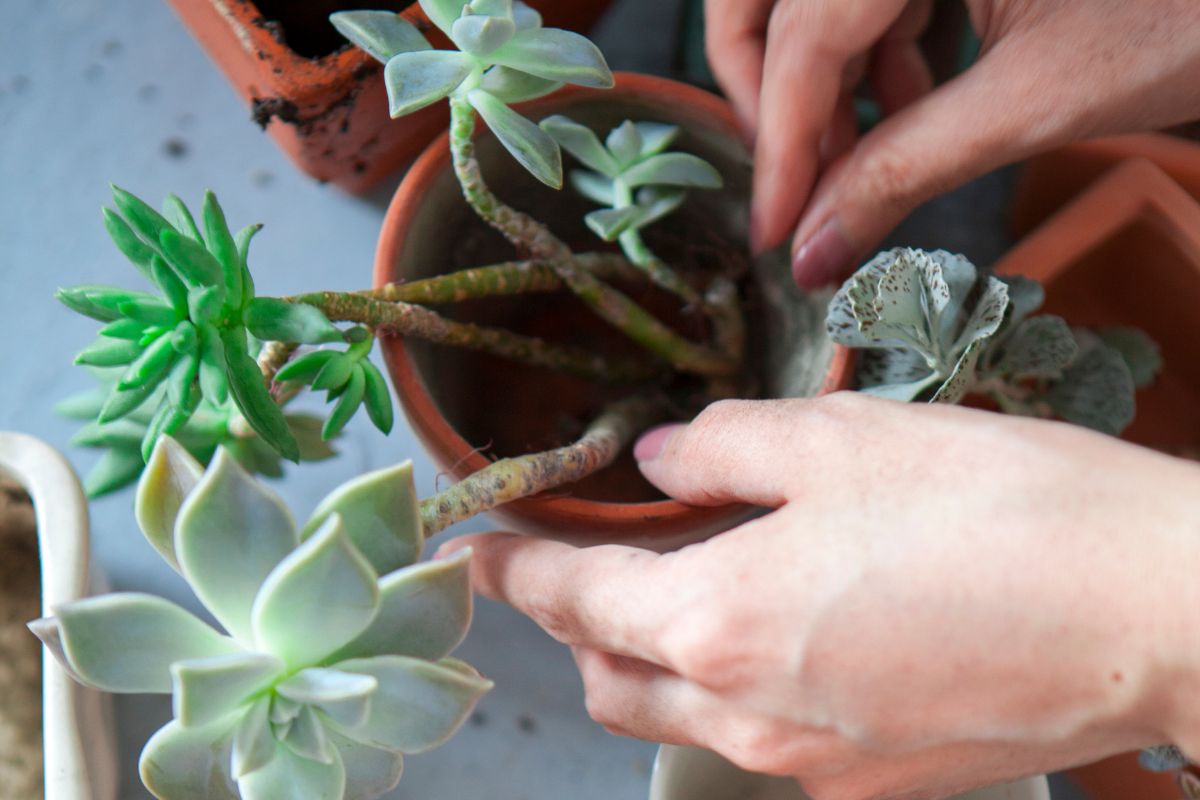
How to Repot Succulents
In order to repot succulents, you need these materials:
- The succulents you want to repot
- A new (larger) pot
- Fresh substrate
- Gardening gloves
- Optional: Succulent fertilizer
- Optional: Disinfectant or fungicide
Before you begin, make sure the soil around the succulent is dry. Then, gently remove the plant from its current pot.
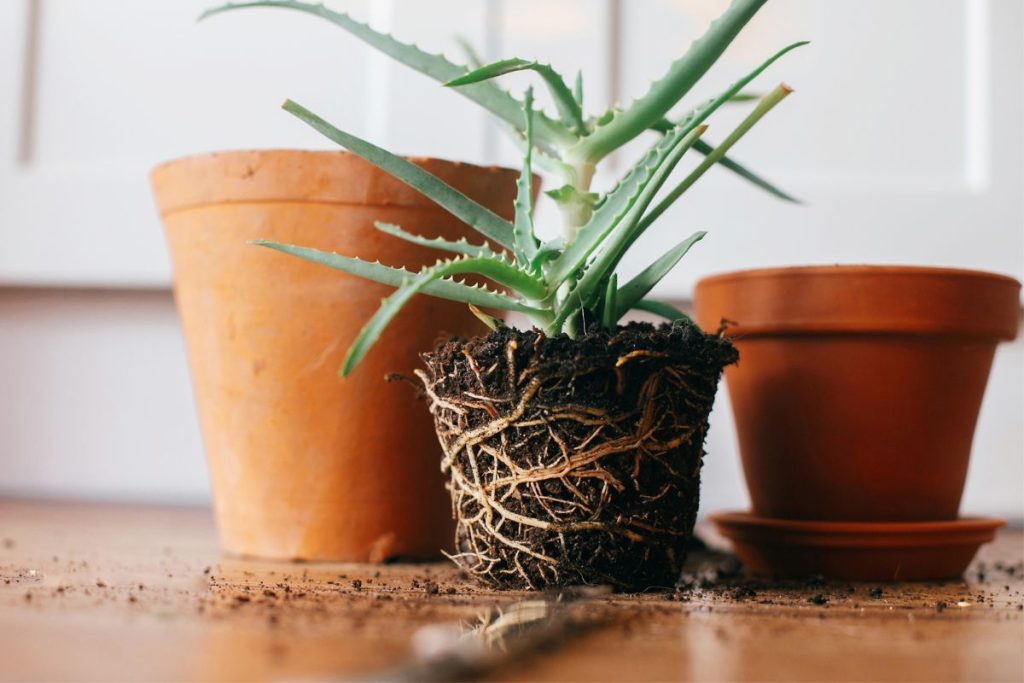
Repotting Succulents with Normal, Fine Root System
- Remove any rotten or dead root parts. Healthy roots are usually light to light brown in color and firm. Avoid muddy or dark brown to black roots as they are likely to rot.
- If necessary, shorten the root ball slightly. This can stimulate growth as the roots will regenerate. Let the succulent plant sit for a while to allow the wounds to dry.
Repotting a Cactus Without Hurting Yourself
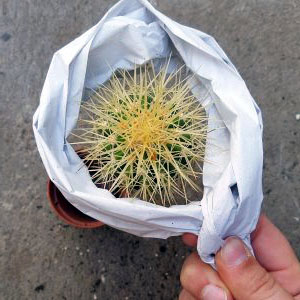
- Take a piece of newspaper or paper and roll it up.
- Place the rolled paper around your prickly succulent like an eyelet.
- Hold both sides of the newspaper where they meet to form a circle around the plant.
- Gently tilt the pot and plant on its side.
- Use the rolled paper as a handle to carefully remove the plant from the pot.
Pro Tip: You can also use pliers or firm gloves for handling thorny succulents.
Repotting a Trailing Succulent
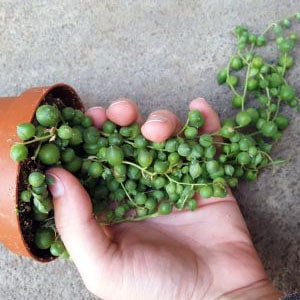
- Lay the succulent plant on the ground and arrange the delicate leaves or hanging shoots in one direction.
- Hold the base of the plant with your fingers.
- Turn the pot with the succulent on its side, ensuring the hanging parts of the plant are also arranged.
- Slowly separate the pot from the root ball.
Potting / Planting
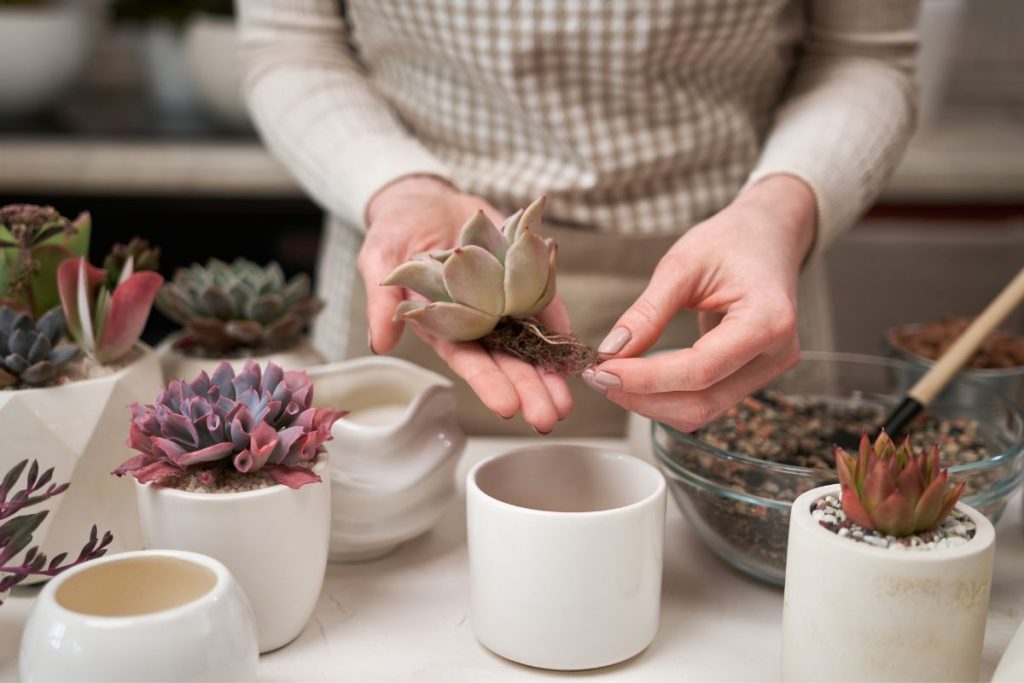
- Remove the soil around the roots.
- For larger pots, cover the drainage holes with small lava rocks or clay shards to prevent clogging. Good water drainage is essential. Always use a pot with a drainage hole for succulents.
- Fill the pot with substrate up to the level of the succulent plant. The selection of substrate depends on the specific plant.
- Make sure the plant is positioned in the middle of the pot and the body is at the same depth as before. Avoid burying side shoots, but for beheaded cuttings with a bare stem, they can be planted deeper.
- Fill the empty spaces around the succulent plant with substrate and lightly compact it with your fingers.
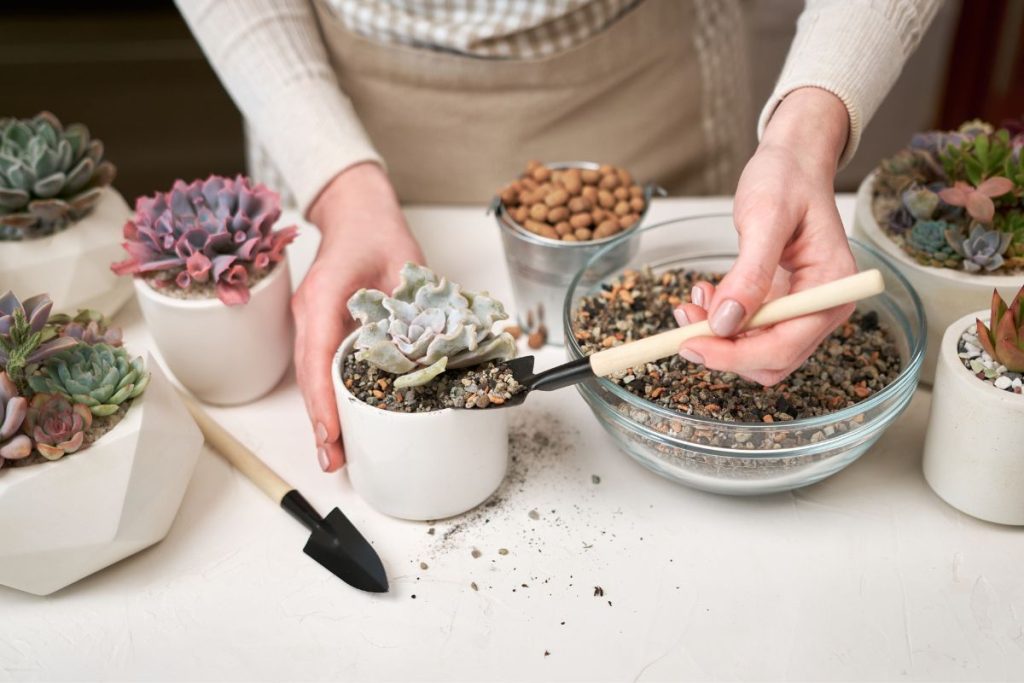
- Optionally, you can add a top layer of finer stones, lava rocks, coarse sand, grit, or expanded clay to give the plant a uniform look and protect the substrate from dehydration and weed seeds.
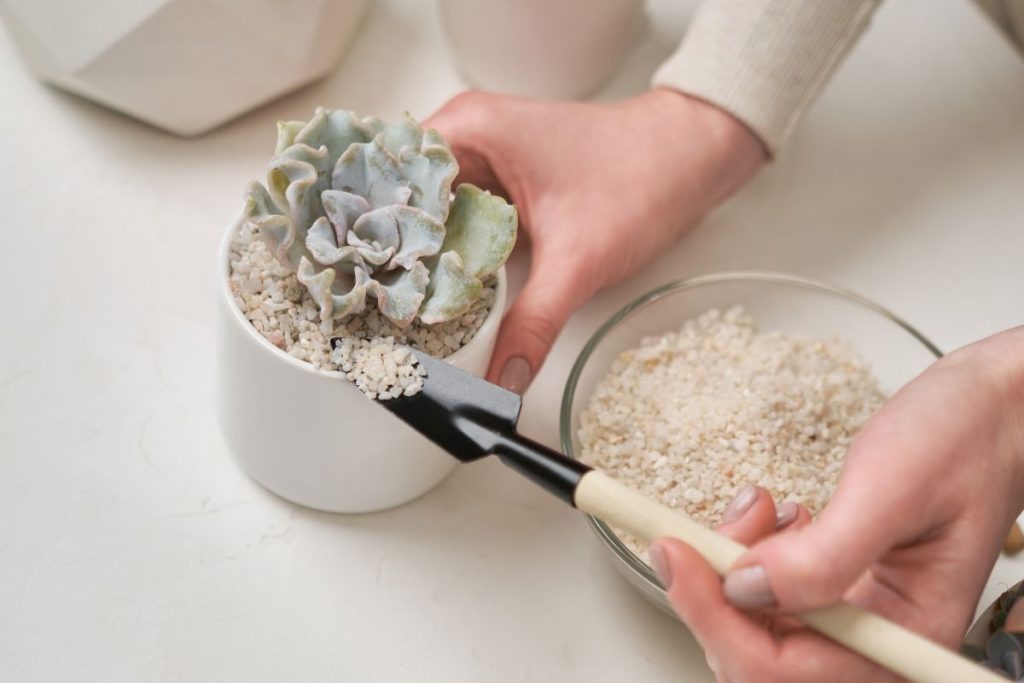
- Place the potted succulent in a warm, bright, partially shaded location. Avoid full midday sun, especially outdoors, for the first 3-4 weeks until new roots have formed.
- Water the freshly planted succulents after a week to reduce the risk of root rot.
Repotting Bonsai Succulents
Bonsai can be grown from many types of succulents and requires regular repotting to maintain their small size and aesthetic appearance.
- Bonsai plants are typically kept in small planters for stylistic reasons. When repotting, use the same container or a clean one of the same size.
- Prune the roots to reduce their mass and encourage a fine, even root system, which promotes healthy growth.
- Replacing the substrate provides the bonsai with fresh nutrients and prevents excessive growth. This keeps the bonsai healthy and compact.
Why Repot Succulents?
1. Newly Bought Succulent Plant
When you first buy a succulent, it might come in a black plastic container for packaging purposes. However, keeping the plant in this container for a long time can hinder its growth and prevent proper water circulation. Repotting allows you to examine the plant for any lurking parasites and ensure its overall health.
2. The Succulent Plant Has Outgrown the Container

If your succulent starts tipping over or has roots sprouting out of the sides or drainage hole, it may have outgrown its container. This is a good sign that the plant has been receiving enough nutrients and light for optimal growth. Repotting in a larger container prevents nutrient depletion and supports continued growth.
3. Planned Soil Changing
Sometimes, repotting succulents is necessary to replace the soil. It’s important to change the soil when you first buy a new succulent, as the soil that comes with it may have been watered too much. Changing the soil ensures a healthier environment for the plant to thrive.
Frequently Asked Questions
How to know when to repot succulents?
If you don’t have a specific reason to repot your succulents, it’s recommended to do so every 2 years as a preventive measure. This helps ensure the plant receives adequate nutrients and prevents the formation of root balls. Repotting also keeps the soil aerated and provides room for root growth.
Should you water succulents after repotting?
After repotting, it’s best to let your succulents acclimate to their new environment for about a week before watering. This allows the roots to settle into the new soil and ensures their nourishment.
How often should succulents be repotted?
The frequency of repotting depends on the succulent species. As a general rule of thumb, repotting every 2 to 3 years is recommended to provide sufficient space for root growth.
When is a good time to replant succulents?
The ideal time to replant succulents is between the end of winter and the beginning of spring. Avoid repotting during summer, as the plants are in their fastest growth phase, and repotting could disrupt this process.
When is the best time to transplant a cactus?
For cacti, the best time to transplant is at the end of the dormant period, between March and May. Avoid transplanting in winter. It’s easier to remove a cactus from dry soil, so stop watering it before repotting.
Why did my plant die after repotting?
Succulent roots and calloused leaves are not yet able to withstand moist conditions after repotting. The roots need time to adjust and repair any damage. Provide your repotted succulent with bright, covered space without direct sunlight. After a week, water the plant sparingly to encourage root absorption.
